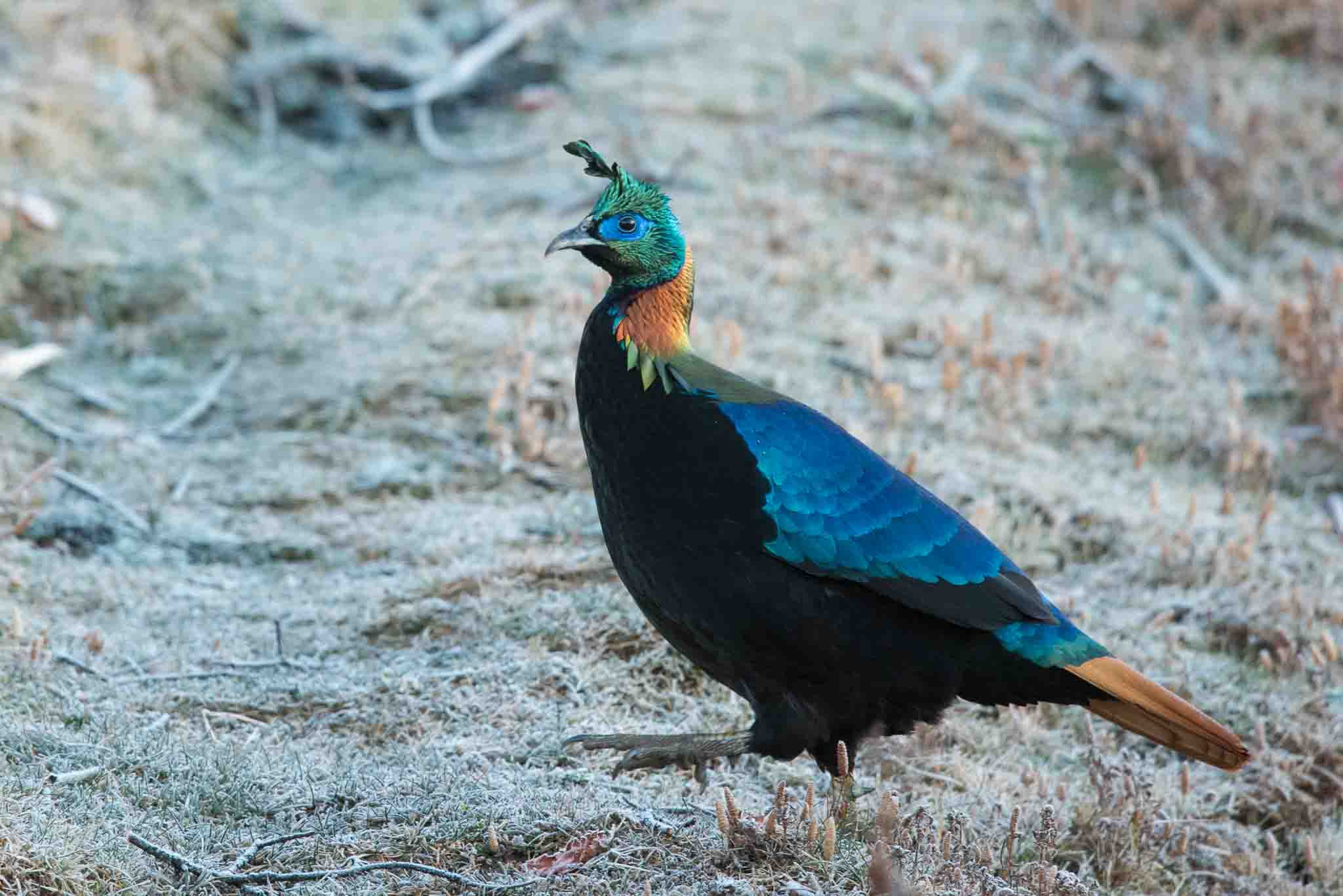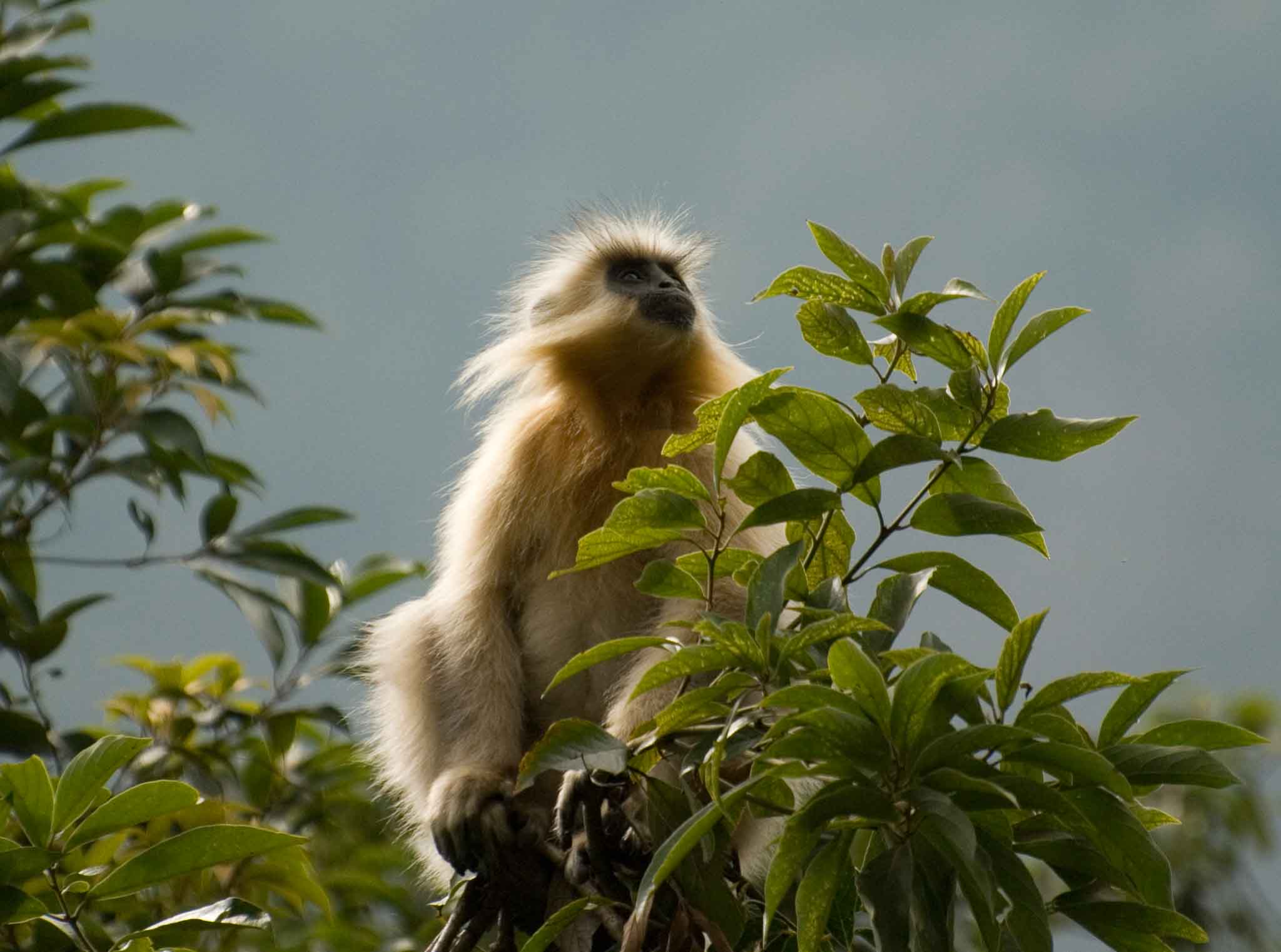
High in the mysterious and majestic eastern Himalayas, nestled between Tibet and India, lies the small Kingdom of Bhutan, increasingly renowned as one of the Earth’s last precious, unspoiled spots. In this fascinating place, an intact Buddhist culture is integrated into every aspect of daily life set amid spectacular mountain scenery, pristine forests, and picturesque valleys. The breathtaking landscape is dotted with fluttering prayer flags, colorful farmhouses amidst terraced fields, and impressive monasteries clinging to impossible cliffs.
This shining cultural gem is also a birder’s paradise. Over 60 percent of the country is forested, and unlike other Himalayan countries, much of Bhutan’s original forest remains intact. As a result, Bhutan lies in an area designated as one of the world’s ten biodiversity hotspots. Its wide altitudinal range—from sub-tropical lowlands to alpine peaks—provides an array of climatic conditions and habitats, from sub-tropical jungles to temperate forests and tundra that support now over 700 bird species. The diversity of birdlife in Bhutan is further augmented by numerous migrating species that pass through Bhutan on their travels north and south. For these reasons, the Bhutan bird list includes some of the rarest and most sought-after species in the eastern Himalayas. Thirty-four species of birds classed as threatened or near-threatened are found in Bhutan, including Black-necked Crane, Rufous-necked Hornbill, and Pallas’s Fish Eagle, and the critically endangered White-bellied Heron. Because of Bhutan’s progressive forest conservation practices, many of these species still thrive in Bhutan and can be found easier here than elsewhere in their range.
In addition to having an astonishing diversity of birdlife in a country no larger than Switzerland, Bhutan is home to at least 165 species of mammals, including Golden Langur, Leopard, Rhinoceros, and Asian Elephant in the lowlands; Red Panda, Himalayan Black Bear, and Musk Deer in the middle-elevation forests; and Snow Leopard and Takin on alpine meadows. Tigers might be found anywhere from the bases of the foothills to above tree line. The diversity of Bhutan’s flora is no less impressive. More than 600 orchid species (including at least 50 that are endemic), 46 species of rhododendrons (4 endemics), and more than 300 species of medicinal plants are found within its borders.
During our expedition, we will see a wide variety of birds, wildlife, and scenic wonders. Our walks and drives will take us through virgin forests, across high open pastures, to Bhutan’s most extensive high-elevation wetland, as well as to mountain villages and monasteries. Throughout the tour, we’ll occasionally stop to visit the impressive goembas (monasteries), dzongs (the monastery/fortresses that serve as Bhutan’s administrative and religious centers), temples, and stupas that are important features of Bhutan’s religion and culture, both past and present. We’ll have opportunities to enjoy traditional Bhutanese arts and crafts, which represent Bhutan’s living heritage and reflect the culture’s spiritual and intellectual life. Surrounding us at every turn will be examples of Bhutan’s distinctive architecture with its traditional shapes, colorful patterns, outrageous “motifs,” and an unmatched combination of engineering skill and aesthetic beauty.
